
The Gibson L6S (usually Gibson L6-S, or L6 solid) launched in 1973 as the companies first all-maple solid body electric guitar. It also featured a 24 fret two-octave neck. It shipped throughout the 1970s and into the early 1980s, with a little over 18000 instruments produced in total; certainly one of the most successful of Gibson's seventies guitars. The L6-S was the epitome of Norlin-era Gibson output. The use of maple bodies, necks and fretboards, usually with just a simple clear coat finish, made for an instrument quite distinct from earlier guitars, both visually and tonally. A real contrast to the mahogany and rosewood guitars of the fifties and sixties, with their Sunburst, Cherry or Walnut finishes. Around a third of L6-S (Custom) guitars were black with an ebony fretboard, still with a maple body and neck. Other finishes did exist (including a very fetching Cherry Sunburst) but were produced in vastly lower numbers.
Early L6-S examples were built at Gibson's famous Kalamazoo plant, though by the mid 1970s, the L6S was being produced at Gibson's second plant, the newly opened facility at Nashville. Initially the guitar was simply designated L6-S, though with the addition of two new models (1974s Midnight Special and 1975s L6-S Deluxe) the original L6-S became the L6-S Custom.
The Midnight Special and L6-S Deluxe were aimed at a lower price point, using alder as a body wood, slightly simpler electronics and (in the case of the Midnight Special) a bolt-on neck. Neither were anything like as successful (commercially) as the L6-S Custom.
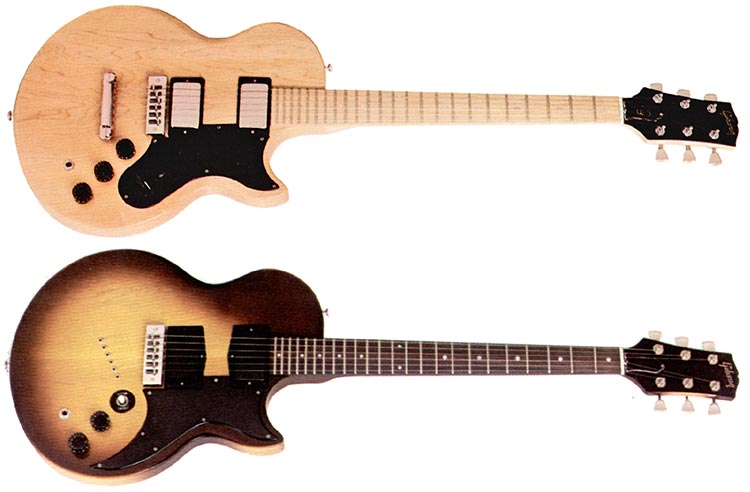
Two versions of the L6-S guitar, the Custom (top) and the Deluxe (bottom).
The Gibson L6-S was designed in 1972 by then Gibson employee Bill Lawrence. The remit was to create a guitar with as varied an array of sounds as possible, without overly-complicated electronics, and something that could compete with Fenders six string range. Bill Lawrence explains:
In 1972, I was asked to design a multi-sound system for the SG Standard. This didn't make any sense to me, and after several meetings with marketing, I convinced them to introduce a completely new solid-body that offered a wide variety of different sounds. I was given a free hand as long as I observed a set production cost limit. In order to stay within that limit, I had to make use of their existing hardware, including pickup covers, and the champfered body contours I wanted were not in the budget either. Given a mere $25 more to work with, I could have made the guitar to my specs. Also, I had designed a beautiful three post lightweight bridge made of hardened stainless steel that could be converted into a trem and a two 3 position toggle switches for nine different sounds. The first 3 position switch was a pickup selector while the second was a sound selector -- position one was for Les Paul , position two for Strat, and position three for Tele sound.
Well, I had to stay within the budget, and we ended up with a six-position rotary switch, pickups with large humbucker covers, a stock Schaller bridge with a "stop" tailpiece, and a clumsy-looking body. My original prototype had a beautiful, elegantly-shaped pickguard, but somebody changed that too. Even with these changes, the early production L6-S was still an excellent performer. When the new ownership took over, there were even more changes, and by 1976, the L6-S had become just another Les Paul-style Gibson solid-body. All that remained of my original design was the thin, lightweight body with its large cutaway for easy access to all 24 frets.
Read the rest of this article at the Bill Lawrence website
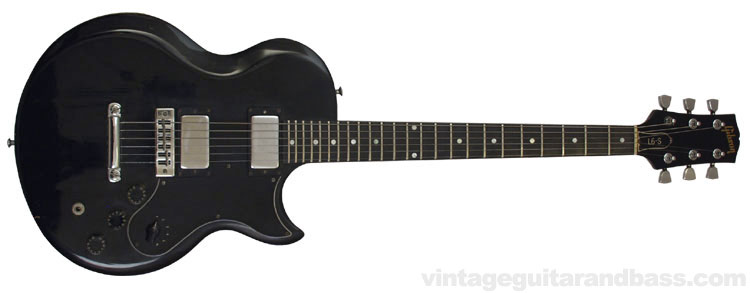
The L6-S (or the L6-S Custom, as it would ultimately be known) was launched in 1973 at the summer NAMM show in Chicago, very much as a more affordable version of the Gibson L-5S. It retained the L-5S body shape, still had maple body / neck (although the L-5S was curly maple, rather than close grain) and an (optional) ebony fingerboard. Solid bodies had traditionally been mahogany up to this point, but for reasons of economics, and fashion, the seventies saw a range of maple Gibsons, and L6-S was one of them.
Electrically it differed from the L-5S though, with its six-position phase switch, or "Q System" - two incredibly hot Super Humbucking pickups wired for series, parallel or single performance - with treble roll-off and midrange controls. The idea was to offer new sounds and as much versatility as possible: “from country "chicken pickin'" to the most abstract jazz riffs”. To this end, the L6-S also had a two octave, 24 fret neck - the first Gibson to have this.
The guitar shown below was in the 1973 Gibson Look Ahead to Gibson flyer. Unlike the majority of L6-Ss this instrument has a two-piece scratchplate, old-style headstock script, and block inlays. Whether these features were exclusive to the prototype, or used in early production models is unclear. Certainly some early L6-S guitars had the block inlay seen here rather than the more usual dot inlays. Shipping figures do not split by finish in 1973/74, but early examples were often shipped with very attractive burst finishes, often mostly red (Cherry Sunburst) or mostly brown (Tobacco Sunburst). Compare this guitar to a later, 1976 L6-S Custom
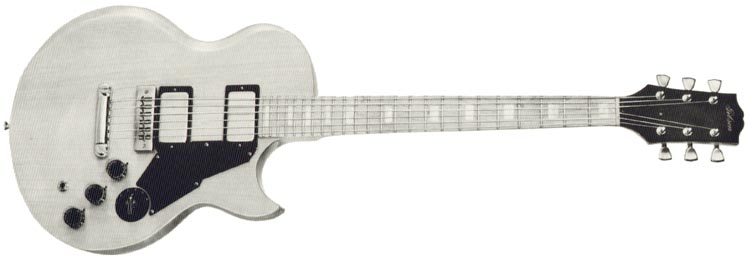
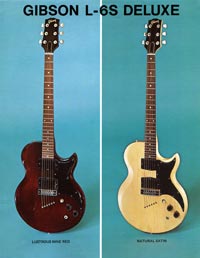
In 1974 a second model was released (the Midnight Special), and in 1975 a third, the Deluxe (see a 1976 L6-S Deluxe) was launched at the '75 Summer NAMM show. The original model was then re-named the L6-S Custom. Both new models were a cheaper instruments with simpler electronics, strung through the body, bolt-on neck for the Midnight Specials and a rosewood fingerboard for the Deluxe. Each had its own unique scratchplate. Some instruments may have been alder-bodied too.
L6-S production started at the Kalamazoo plant in Michigan, however it moved to Nashville, certainly by the end of 1977, perhaps earlier.
The series lasted throughout the 70s, with the deletion of the model announced in dealer newsletter Gibson News in June 1980. Some examples still shipped from the Nashville plant, though, as late as 1981 for the Custom and Deluxe and 1982 for the Midnight Special. The L-6S Custom was finally promoted (as a close out line) in the 1981 Gibson Specials pre owners manual in June 1981. The current owners of Gibson produced a limited reissue in 2011.
Electric guitar advertisements originally published from 1974 onwards. Click on the images for larger copies. Check out other vintage Gibson advertisements
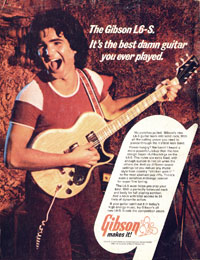
Gibson L6-S Custom - Its the best damn guitar you ever played (1974)
This early advert for the L-6S was printed when the guitar was at it's peak. 1974 was the only year with reasonable sales, despite the high profile endorsement of Carlos Santana, Al DiMeola and oth...
[more]
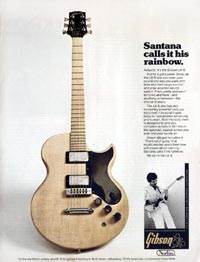
Gibson L6-S Custom - Santana Calls it His Rainbow (1974)
Actually, it's the Gibson L6-S. But he's got a point. Because the L6-S lets you color your sound any way you want with tone and mid-range control and a six-position sound switch. From pretty and wa...
[more]
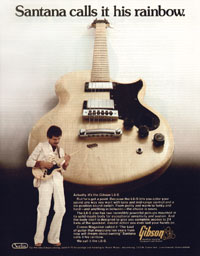
Gibson L6-S Custom - Santana Calls It his Rainbow (1976)
Mid 70s advertisement for the Gibson L6-S series. The image features Carlos Santana (of latin rock band Santana) playing the L6-S Custom. This model was the first of the series, and was simply know...
[more]
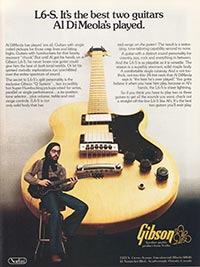
Gibson L6-S Custom - L6-S. It's the Best Two Guitars Al DiMeola's Played (1977)
Jazz guitarist Al DiMeola is pictured playing an ebony-finished L6-S Custom. This advertisement hails from mid-1977; several years after the L6-S initial launch, and following similar adverts for t...
[more]
$1900
$1995
$1499
$1700
$1999
$1400
$1600
$1997
$580
£1996
€1850
£1833
€1250
£1537
AU $4500
AU $4250